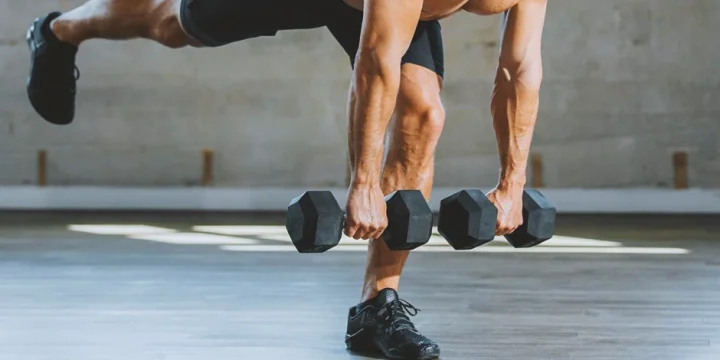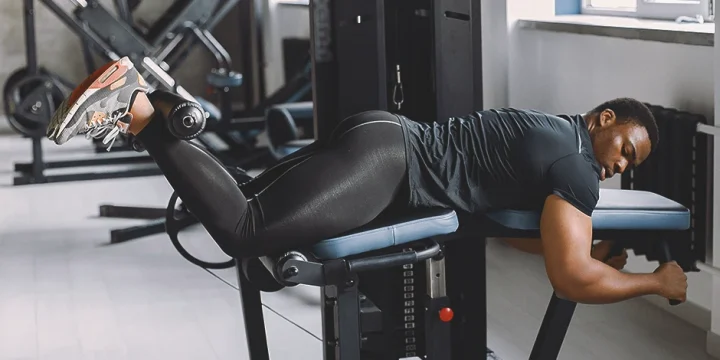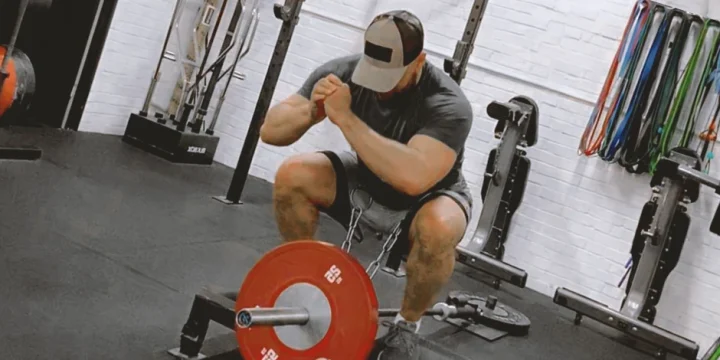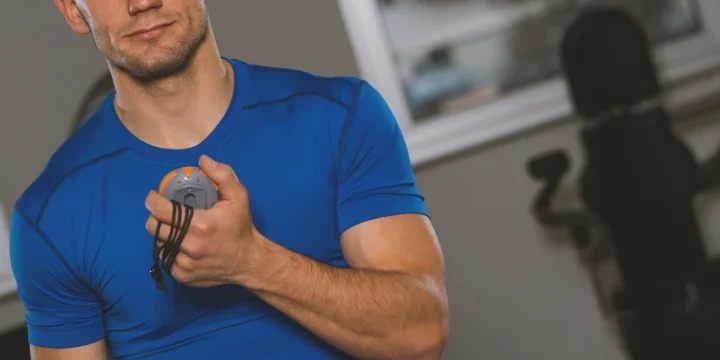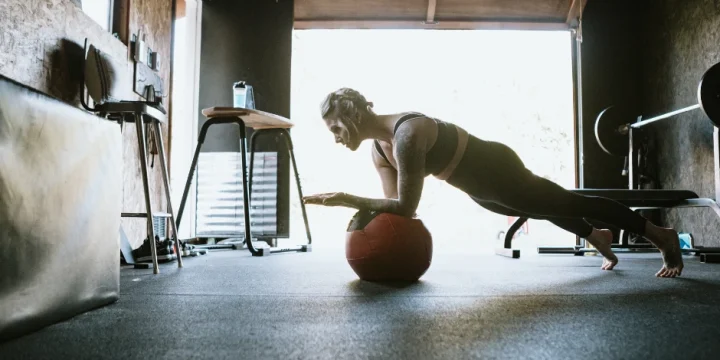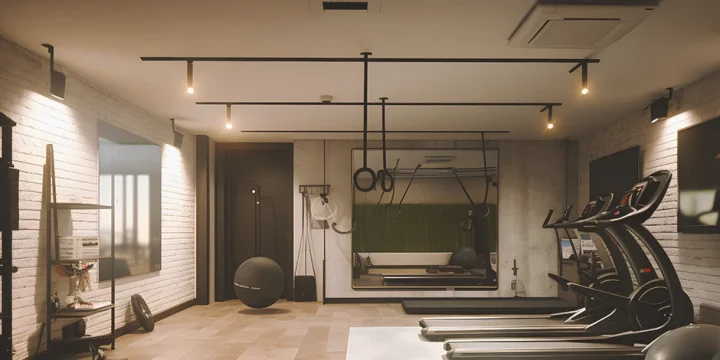As a personal trainer, it may appear unusual that I'm writing about how individuals may work out their legs at home rather than at the gym.
But I wouldn't be accomplishing my duty if I didn't inform our followers and clients about how to maximize leg workouts and get that perfectly toned leg muscle.
Over the years, I've accumulated enough knowledge to assist people and provide guidance on the right and diverse workouts to make a major impact.
Here are a few exercises that will give you that toned leg muscle in no time.
Quick Summary
- To build powerful legs, include ultimate home gym exercises like squats, lunges, leg presses, leg curls, and calf raises.
- Generally, incorporate variations for intensity, prioritize proper form to prevent injury, aim for 3 sets of 10-15 reps per exercise, and include cardio for overall fitness.
- Research in the Journal of Sports Science and Medicine indicates that incorporating step-up exercises into a home gym routine maximizes gluteus maximus (GMax) activation, surpassing other loaded exercises.
- As a fitness trainer, I frequently advise clients to avoid overworking their leg muscles and to include a healthy diet with protein supplements for injury prevention during workouts.
Creating Your At Home Leg Workout
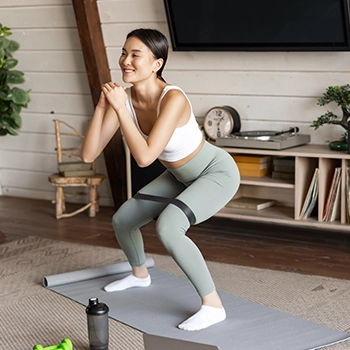
To create an effective at-home leg workout, include hallmark exercises like bodyweight calf raises, lunges, squats, and deadlifts with variations. These target the quads, hamstrings, and glutes for a comprehensive leg workout.
Since movement isn't one-dimensional, varying exercises is crucial. Use weights, resistance bands, and bodyweight moves for mobility and strength, practicing leg-focused exercises 2-3 times weekly for optimal results.
In my years of working with clients, I consistently emphasize the importance of adjusting reps and weight based on their individual ability and fitness level.
Also read: Best Calisthenics Leg Exercises: Stronger Lower Body
Exercises For Your Leg Workouts

Choose from our best lower-body workout list when designing your next leg exercise.
1. Warm Up
A complete workout includes a proper warm-up and cooldown.
Commence your warm-up with five minutes of light cardio to elevate your heart rate and enhance blood flow. If time allows, spend an additional five minutes using a roller for soft-tissue relief.
Next, engage in dynamic stretching, incorporating right and left leg swings, bodyweight squats, lunges, and hip openers.
Conclude your session with a thorough stretching routine to maximize flexibility and recovery.
2. Leg Workouts With Rubber Band
This workout requires simply a resistance band. Training with quality home gym resistance bands might be especially beneficial if you're new to strength training or recuperating from an injury.
Lateral Band Walk
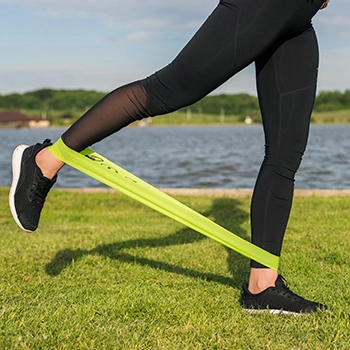
The lateral band walking workout may seem unusual, but it's effective for improving hip mobility, training hip abductors (especially the gluteus medius), and enhancing knee joint stability, as per the National Institute of Health [1].
Here's how to do it:
- Place the band slightly above each ankle, ensuring it's flat and not bunched.
- Stand with feet shoulder-width apart, keeping the band tight but not stretched.
- Bend your knees slightly, adopting a half-squat position to activate the gluteus medius.
- Maintain a straight line from feet to shoulders, looking forward, and distribute body weight evenly.
- In the half-squat position, shift your weight to one foot and take lateral strides with the other, moving it in and out sideways for eight to ten repetitions.
- Keep hips level, maintaining a low, forward-facing stance with a straight back.
- Slowly shift your weight, switching legs for balance and stability.
Banded Side Lunge
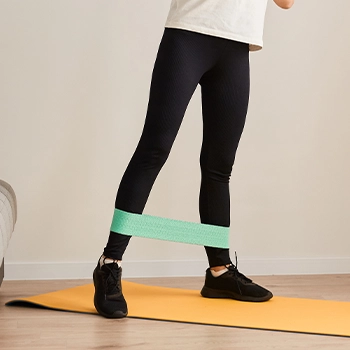
The banded gliding lateral lunge is a comprehensive lower body exercise.
Here's how to do it:
- Place your left foot on the band, grab the handles with an overhand grip, and step to your right for a deep lunge.
- Return by driving up with your right foot and repeat on the opposite side.
Banded Step-Outs
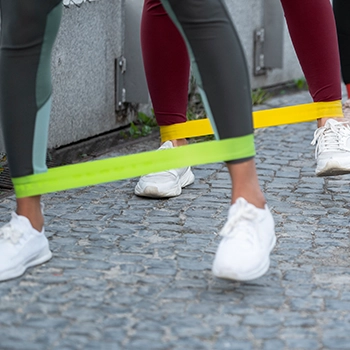
Banded step-outs engage the glutes, but it's crucial to perform them accurately for therapeutic benefits.
Follow these steps:
- Place the band below your knees, squat back with hips, and keep your chest up.
- Step your left foot out, then back in, ensuring your feet stay outside your hips.
- Repeat on the opposite side.
From my experience, for safety, place the resistance band just above the ankles when it's strong to prevent added knee pressure and reduce the risk of injury.
3. Leg Workouts With Weights
For this exercise, choose almost any object that adds weight without compromising your form. Options include dumbbells, kettlebells, a soup can, or even a weighted backpack—get creative!
Read More: Best Dumbbell Leg Exercises
Goblet Squat
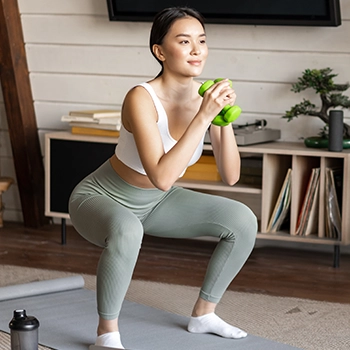
Goblet squats target the quadriceps and glutes.
Here's how to do it:
- Stand with feet slightly wider than hip-width apart, holding a weight or item at your chest.
- Sit back and down as if sitting in a chair, keeping a high chest.
- Focus on lowering your hips below your knee gap.
- Push into your heels, squeeze your glutes, and stand up.
Dumbbell Step-up With a Knee Raise
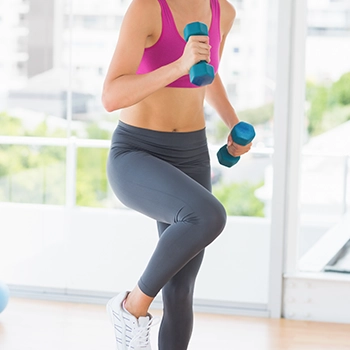
Step-ups with knee raises are a lower-body exercise targeting the quadriceps, glutes, and hamstrings.
Here's how to do it:
- Hold weights at your sides and place one leg firmly on a bench, chair, or stair.
- Rise using the heel of your lifted leg, keeping your body straight. Lift your knee to hip level when on the bench.
- Lower yourself under control without placing your other leg on the bench.
"The step up engages your entire leg muscle group, including your glutes, quadriceps, and hamstrings. Because it has minimal impact, it is also an excellent alternative for people who have had knee problems in the past."
- James White, Physical Therapist.
Bulgarian Split Squat
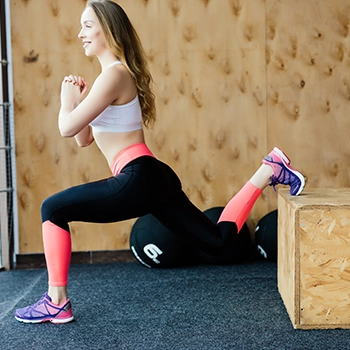
The Bulgarian split squat is a single-leg squat variation where the rear leg is elevated on a bench or sturdy chair.
Here's how to do it:
- Place your left foot on a bed, couch, or bench, holding two dumbbells, and position your right leg approximately one meter in front.
- Lunge down, keeping your body upright, until your left knee is about two inches away from the floor.
- Return to the starting position by driving yourself up.
In my experience, this exercise engages the front foot in a dynamic range of motion, making it excellent for building strength and muscle in a well-rounded manner.
Step-ups
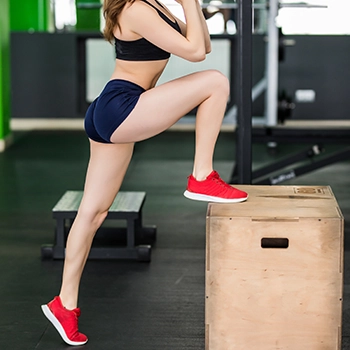
Weighted step-ups are effective for the legs, and incorporating dumbbells adds resistance to the engaged muscles.
Here's how to do it:
- Find a stepping stool, bench, or container.
- Lift your right leg and place it on the container while holding one dumbbell at your chest.
- Maintain a lifted chest and ensure your right shin is vertical.
- Shift into the right heel and step up onto the box.
- Control the movement as you return to the starting position.
- If no container is available, start kneeling, step your right leg forward, and stand up.
- Return to the kneeling starting position.
Weighted Hip Bridges
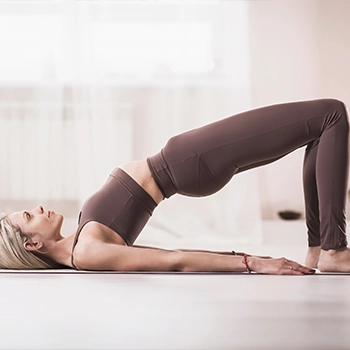
This exercise is designed to tone your gluteal muscles, enhancing the effectiveness of your workout by intensifying the strain on your single-leg glute bridge movement.
Here's how to do it:
- Lie on your back with your knees bent and legs flat on the ground.
- Place a kettlebell, dumbbell, or any object in front of your hips, ensuring your fingertips can reach your heels.
- Brace your core, squeeze your glutes, press into your heels, and lift your hips until your shoulders, knees, and hips are in line.
- Slowly lower your hips back to the ground.
4. Leg Workouts Using Body Weight
For leg workouts using only your body weight, bodyweight training is crucial. Don't overlook it—this approach can be just as effective for building muscle, power, and stamina.
Reverse Lunges or Jumping Lunges
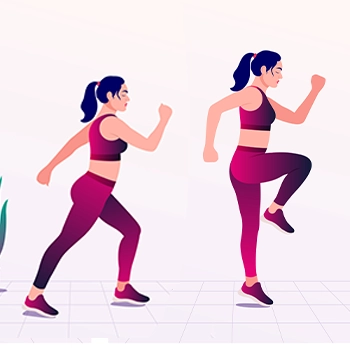
This exercise targets the quadriceps, hamstrings, core, and lower back.
Here's how to do it:
- Position your feet just outside the width of your hips, driving your hips back and down.
- Keep a high chest, focusing on lowering your hips below your knee gap while maintaining an upright torso.
- To stand, push into your heels (or jump back up for added intensity and caloric expenditure).
Close-stance Heel-elevated Squat
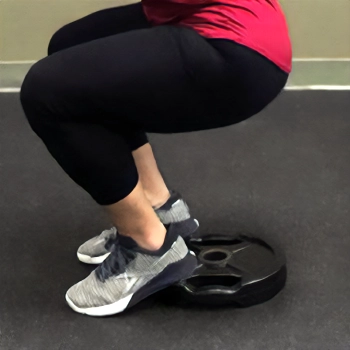
This exercise is a squat development where a heel lift enhances ankle flexion and extension range, enabling the knees to extend past the toes.
Here's how to do it:
- Position weighted plates or bricks on the floor, placing your heels on them with feet hip-width apart.
- Lower your body by bending your knees, simultaneously extending them.
- Go as deep as possible while keeping your head, back, and pelvis straight.
- Return to a standing position by extending your hips and knees.
Learn More: Heel Elevated Squats: Form, Technique and Benefits
Standing Long Jump
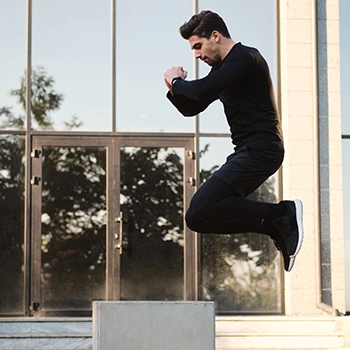
Standing long jumps engage the glutes, hip flexors, quads, abs, hamstrings, and calves.
Here's how to do it:
- Crouch down into a squat with your feet shoulder-width apart.
- Swing your arms back to propel yourself forward, then bring your feet forward for added momentum.
- Jump as far as you can and land on the soles of your feet.
"Standing long jumps are the best way to develop exploding horizontal power. Strive to jump upward and forward to decrease pressure on your knees."
- Phillip Leonard, Personal Trainer
How Many Reps and Sets Should You Do in a Leg Workout?
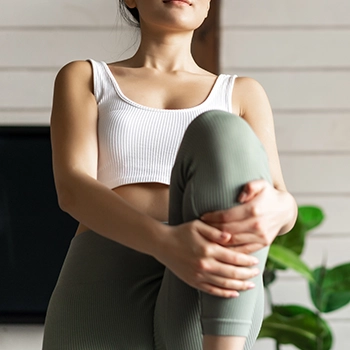
For a novice aiming to enhance overall fitness in a leg workout, focus on 3-5 exercises.
Complete three sets of eight to twelve reps for each activity, pushing your muscles to exhaustion without reaching failure, as suggested in research from ScienceDirect [2].
In my training experience, focusing on five exercises enhances concentration and performance, while overly long workouts may compromise effectiveness.
Related: Best Hamstring Workouts
FAQs
What Is the Best Home Leg Workout?
The best home leg workout includes squats, single-leg Romanian deadlifts, and walking lunges for comprehensive muscle engagement and effective results.
Can You Build Leg Muscles at Home?
Yes, you can build leg muscles at home through leg workouts with higher reps, incorporating supersets, and engaging in HIIT circuits for effective muscle growth.
How Many Squats Should You Do a Day?
The number of squats to do in a day varies based on individual goals—there's no universal recommendation. Tailor your squat routine to your fitness objectives and capabilities.
References:
- https://www.ncbi.nlm.nih.gov/pmc/articles/PMC4951090/
- https://www.sciencedirect.com/science/article/pii/S2095254621000077
About The Author
You May Also Like
